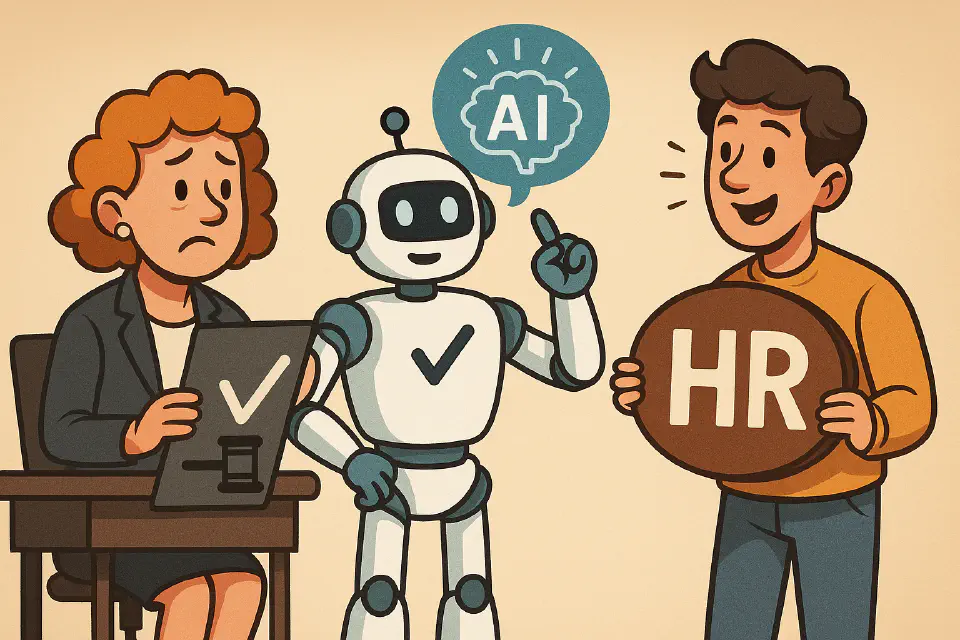
The Future of HR: Balancing Compliance, AI, and the Human Touch
Compliance is getting tougher. AI is getting faster. Employees are getting more diverse. HR leaders are stuck in the middle. This guide explores how to lead the future of HR—without losing the human core that makes it matter.
Compliance is tightening. AI is accelerating. Your employees span four generations. Welcome to HR in 2025.
The good news? HR is more influential than ever. The bad news? It’s also more complex, risky, and fragmented than it’s ever been. Between legal landmines, algorithmic decision-making, and shifting workforce expectations, HR leaders are facing a triple challenge: stay compliant, stay relevant, stay human.
To navigate this new world, we need more than tools—we need a new mindset. This article explores how forward-thinking HR professionals are managing compliance with confidence, adopting AI with intention, and designing workplaces that work for every generation.
The Compliance Crunch: When “Getting It Wrong” Gets Expensive
Let’s start with the obvious: compliance isn’t sexy, but it can tank your credibility overnight.
Jocelyn King, SHRM-SCP and CEO of VirgilHR, saw firsthand how messy multi-state compliance can get—especially for companies scaling fast or working remotely across jurisdictions. Her response? Build an AI-powered compliance assistant that delivers real-time legal guidance directly to HR professionals.
Why it matters now:
- Remote work has turned once-local businesses into national employers.
- Laws are changing faster than most HR teams can track.
- Legal mistakes aren’t just costly—they’re reputational.
Tech can help. But HR needs to own compliance—not outsource it blindly. Whether you use platforms like VirgilHR or internal counsel, the goal is the same: make compliance a strategic advantage, not a reactive nightmare.
The AI Imperative: Use It or Fall Behind
While compliance might keep you out of trouble, AI could make or break your strategic edge.
Jocelyn King’s second big insight: HR leaders aren’t yet equipped to critically assess or implement AI tools. Most can’t differentiate between hype and help. That’s a problem.
The way forward?
- Evaluate bias in tools like resume screeners or chatbot interviews.
- Educate yourself on the basics of machine learning and prompt engineering.
- Experiment safely, starting with non-critical tasks (e.g., job ad writing, onboarding content).
- Establish policies that guide responsible use.
Done right, AI can free up HR to focus on what matters: leadership, strategy, and human connection.
Gen Z, Boomers, and Everyone In Between
We now manage five generations in the workforce. That’s not just an HR trivia fact—it’s a real challenge.
Each generation brings unique:
- Tech literacy levels
- Communication preferences
- Values around work, flexibility, and purpose
The takeaway? There is no one-size-fits-all HR strategy anymore.
What that means in practice:
- Gen Zs may expect rapid feedback and digital-first everything.
- Millennials might prioritize flexibility and development.
- Gen Xs want autonomy and transparency.
- Boomers often value structure and recognition.
The key isn’t to stereotype—it’s to design HR experiences with flexibility at the core.
Performance and Engagement: The Adaptive Model
Old-school annual reviews won’t cut it. Modern performance management needs to be:
- Frequent
- Conversational
- Development-focused
And most importantly—adaptable to life stages and work modes.
A 23-year-old just starting their career? They want growth and clarity. A 54-year-old managing a team? They want autonomy and trust.
And don’t forget engagement.
Remote work expanded your reach—but also your risk. Disengagement is often silent until it’s not.
- Set up listening loops (surveys, skip levels, focus groups).
- Make engagement data part of your executive dashboards.
- Pair insights with clear actions—not just glossy reports.
Bringing Humanity Back to HR
With all the tech talk, it’s easy to forget: HR is still about people.
Jocelyn King emphasizes that AI should augment human insight, not replace it. If we automate empathy out of HR, we’re doing it wrong.
Here’s how to keep the human core:
- Make time for informal connection (e.g., random coffee pairings).
- Empower managers to show care—not just track metrics.
- Rethink policies through a lens of dignity, not just efficiency.
The irony of AI? The more it can do, the more important our humanity becomes.
What’s Next for HR?
The future is already here—and it’s asking more of HR than ever before.
Here’s where to focus:
- Build digital fluency across your HR team.
- Create flexible structures that support multigenerational needs.
- Use AI with care, ethics, and experimentation.
- Treat compliance like brand protection.
- Lead with empathy, especially when the pressure’s high.
Let’s stop pretending HR is either people or tech. It’s both. And the leaders who embrace that complexity—who balance compliance with culture, AI with insight, speed with care—will define the next era of HR.
Stay sharp. Stay human. The future of work is being built right now. And HR is holding the blueprint.